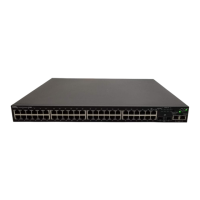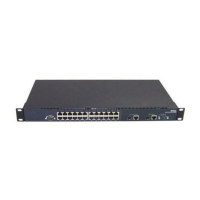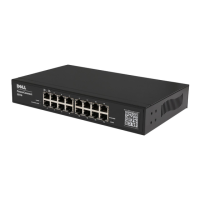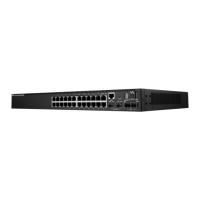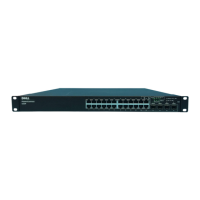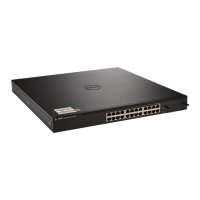IPv6 Addressing 227
User Guidelines
• The IPv6Z address format: <
ipv6-link-local-address
>%<
interface-name
>
–
interface-name
—
vlan
<
integer
> |
ch
<
integer
> |
isatap
<
integer
> | <
physical-port-name
> | 0
–
integer
— <
decimal-number
> | <
integer
><
decimal-number
>
–
decimal-number
— 0 | 1 | 2 | 3 | 4 | 5 | 6 | 7 | 8 | 9
–
physical-port-name
— Designated port number, for example 1/e16.
Example
The following example defines a static host name-to-address mapping in the host name cache.
ipv6 neighbor
The ipv6 neighbor Global Configuration mode command configures a static entry in the IPv6 neighbor
discovery cache. Use the no form of this command to remove a static IPv6 entry from the IPv6 neighbor
discovery cache.
Syntax
•
ipv6 neighbor
ipv6_addr hw_addr
{
ethernet
interface-number
|
vlan
vlan-id
|
port-channel
number
}
•
no ipv6 neighbor
ipv6_addr
{
ethernet
interface-number
|
vlan
vlan-id
|
port-channel
number
}
–
ipv6_addr
— IPv6 address to map to the specified MAC address.
–
hw_addr
— MAC address to map to the specified IPv6 address.
–
ethernet
interface-number
— Valid port number.
–
vlan
vlan-id
— VLAN number.
–
port-channel
number
— Port channel number.
Default Configuration
This command has no default setting.
Command Mode
Global Configuration mode.
User Guidelines
• The
ipv6 neighbor
command is similar to the
arp
(global) command.
• If an entry for the specified IPv6 address already exists in the neighbor discovery cache, learned
through the IPv6 neighbor discovery process, the entry is automatically converted to a static entry.
• Use the
show ipv6 neighbors
command to view static entries in the IPv6 neighbor discovery cache.
Console (config)# ipv6 host ABC fe80::11 fe80::22
book.book Page 227 Thursday, December 18, 2008 7:40 PM

